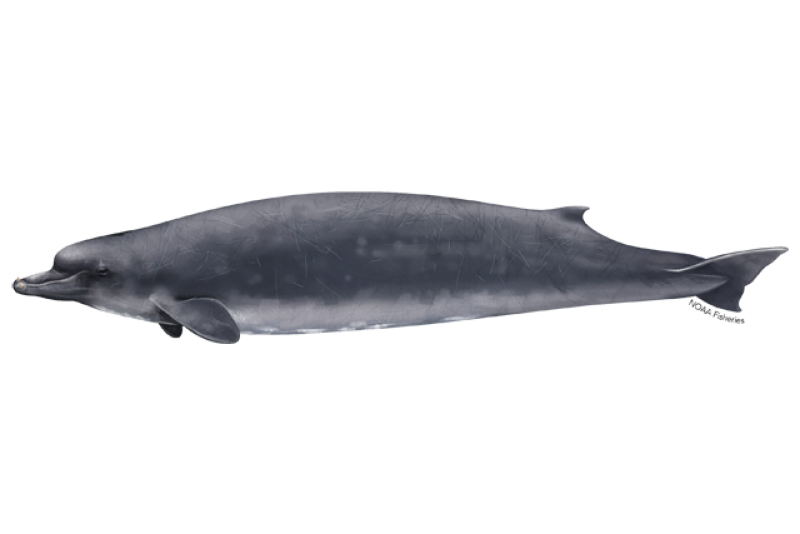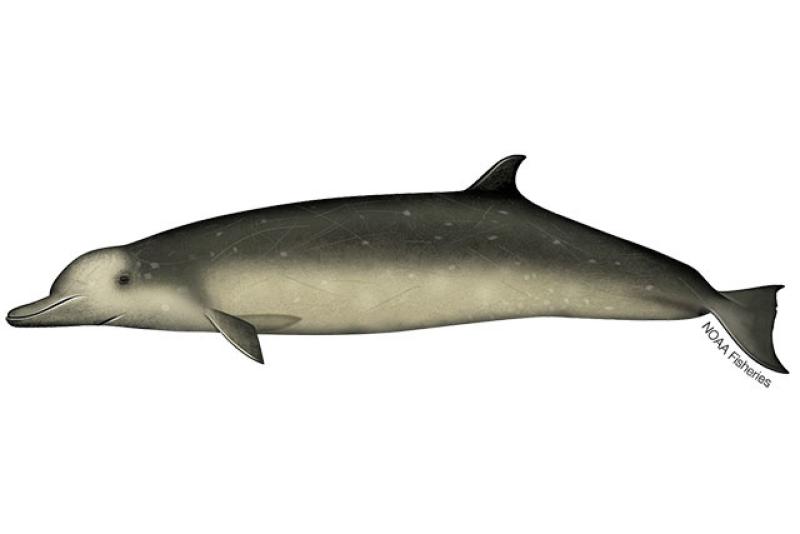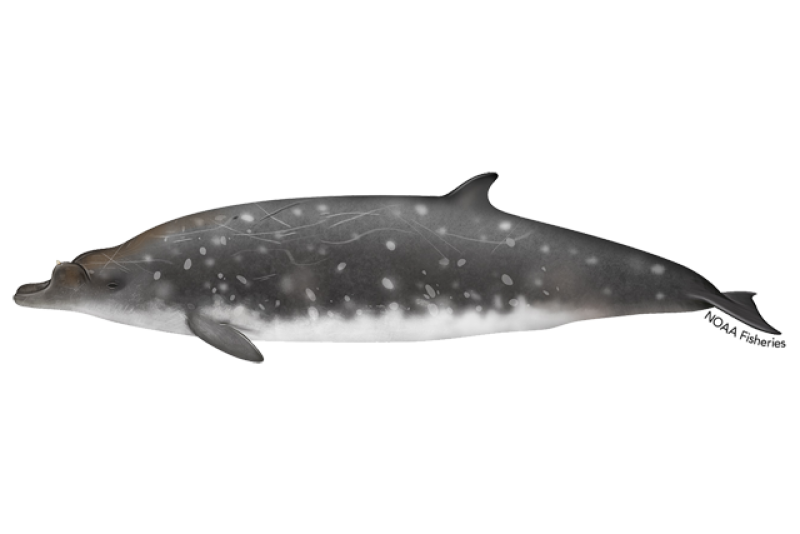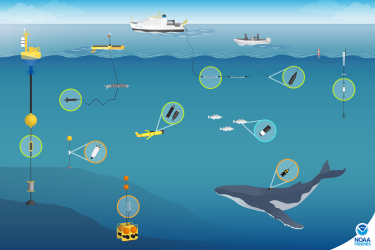True's Beaked Whale
Mesoplodon mirus
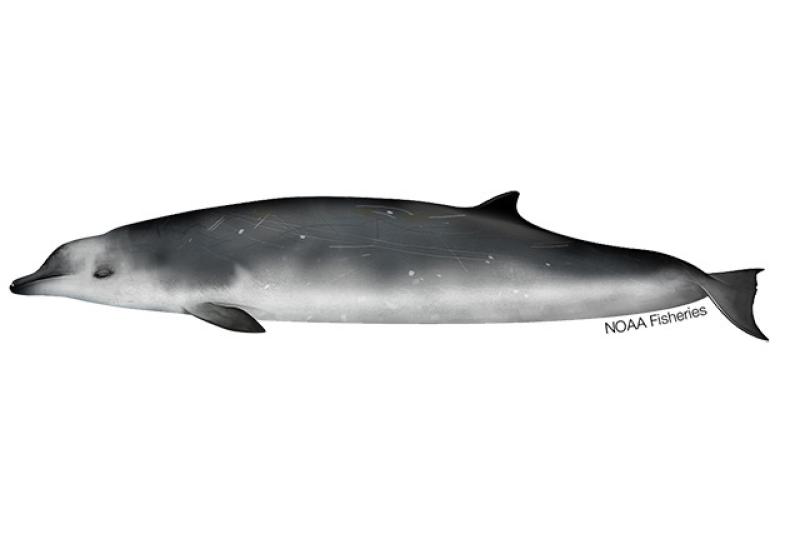
Protected Status
Quick Facts
About the Species
True’s beaked whales are little known members of the beaked whale family, Ziphiidae. They can be found in deep, warm, temperate waters of the North Atlantic Ocean as well as at least two other areas in the Southern Hemisphere. They receive their common name from Frederick W. True, a curator at the Smithsonian Institution, who described the species from an animal that stranded on a beach in North Carolina.
There is little information on the abundance of True’s beaked whales worldwide. The beaked whale family is cryptic and skittish and distinguishing between species in the field can be challenging.
Like all marine mammals, True’s beaked whales are protected under the Marine Mammal Protection Act and face threats from human-caused ocean noise. True’s beaked whales are considered “data deficient” by the International Union for Conservation of Nature’s list of threatened species, meaning that there is not enough information to assess their population status.
Population Status
NOAA Fisheries estimates population size for True’s beaked whales in its stock assessment reports. A stock is a group of animals that occupy the same area and interbreed. Due to the rarity of sightings at sea, there is little information on the abundance of this species worldwide. Thus, data are insufficient to estimate population size or trends.
Appearance
True's beaked whales have a relatively small- to medium-sized body with a moderately short beak, as well as a rounded, sloping forehead (known as a melon). They have a small, wide-based, slightly hooked dorsal fin located far down their back. Their coloration varies from gray to brown on the dorsal side with a paler ventral side. In the field, they are distinguished from Gervais’ beaked whales (which are similar in appearance) by the pale coloration across their melon and lack of a dark, defined dorsal stripe.
True’s beaked whales in the Southern Hemisphere have more white coloration on their back, tailstock, and underside than those in the Northern Hemisphere. Mature males may have linear scarring covering their body from battling other males for access to females during mating. This species is difficult to observe and identify at sea due to a low profile at the surface and a small, inconspicuous blow. Few have been seen alive at sea.
As adults, True's beaked whales can reach lengths of 15.5 to 17.5 feet and weigh from 2,200 to more than 3,000 pounds. Females may be slightly larger than males. Mature males can be distinguished from females and juveniles by a pair of teeth visible on the tip of their lower jaw. The mouthline is typically straight or slightly curved.
Behavior and Diet
When observed, True's beaked whales are often alone or in small, closely associated groups averaging five to six animals. While diving, they use suction to feed on small fish and cephalopods (e.g., squid) in deep waters. This species has been known to breach and occasionally display surface active behaviors.
Even when dead, many species of beaked whales (especially those in the genus Mesoplodon) are difficult to distinguish from one another because they lack easily discernible or apparent physical characteristics. At sea, they are also challenging to observe and identify to the species level because of their cryptic, skittish behavior, low profile, and small, inconspicuous blow at the water’s surface. Therefore, much of the available characterization for beaked whales is to the genus level only.
Where They Live
True's beaked whales prefer deep warm temperate waters of the North Atlantic Ocean as well as at least two other areas in the Southern Hemisphere (e.g., Indian Ocean). Their range, which is mostly known from strandings, includes areas off of Nova Scotia, Canada, Bay of Biscay, Ireland, Europe, the Azores, the Canary Islands, Bermuda, Florida, and the Bahamas in the Atlantic, as well as off the coasts of Brazil, Madagascar, South Africa, New Zealand, and southern Australia. It is unknown whether this species migrates or exhibits seasonal shifts in habitat use.
Lifespan & Reproduction
The lifespan of this species is unknown, and very little is known about their reproduction. Females generally give birth to a single calf that is about 6.5 to 8 feet long and weighs about 300 pounds.
Threats
Ocean Noise
Deep-diving cetaceans like True’s beaked whales use sound to feed, communicate, and navigate in the ocean. This species may be sensitive to underwater sounds and human-made noise. Sound pollution threatens them by interrupting their normal behavior and driving them away from areas important to their survival, such as breeding and feeding waters.
Scientific Classification
| Kingdom | Animalia | Phylum | Chordata | Class | Mammalia | Order | Cetacea | Family | Ziphiidae | Genus | Mesoplodon | Species | mirus |
|---|
Last updated by NOAA Fisheries on 06/23/2025
What We Do
Conservation & Management
All True's beaked whales are protected under the MMPA. We protect this species by:
- Reducing interactions with commercial and recreational fishing gear
- Implementing requirements to reduce serious injuries and mortalities
- Minimizing the effects of vessel disturbance, noise, and other human impacts
- Educating the public about the threats beaked whales face
Science
Our research projects have helped us better understand True's beaked whales and the challenges they face. Our work includes:
- Stock assessments
- Acoustic monitoring
- Aerial surveys
- Shipboard surveys
How You Can Help
Keep Your Distance
Be responsible when viewing marine life in the wild. Observe all large whales from a safe distance of at least 100 yards and limit your time spent observing to 30 minutes or less.
Report Marine Life in Distress
Report a sick, injured, entangled, stranded, or dead animal to make sure professional responders and scientists know about it and can take appropriate action. Numerous organizations around the country are trained and ready to respond. Never approach or try to save an injured or entangled animal yourself—it can be dangerous to both the animal and you.
Learn who you should contact when you encounter a stranded or injured marine animal
Report a Violation
Call the NOAA Fisheries Enforcement Hotline at (800) 853-1964 to report a federal marine resource violation. This hotline is available 24 hours a day, 7 days a week for anyone in the United States.
You may also contact your closest NOAA Office of Law Enforcement field office during regular business hours.
Featured News

 Rice's Whale. Credit: NOAA Fisheries
Rice's Whale. Credit: NOAA Fisheries
Protecting Species While Planning for Offshore Wind Development in the U.S. Gulf of Mexico
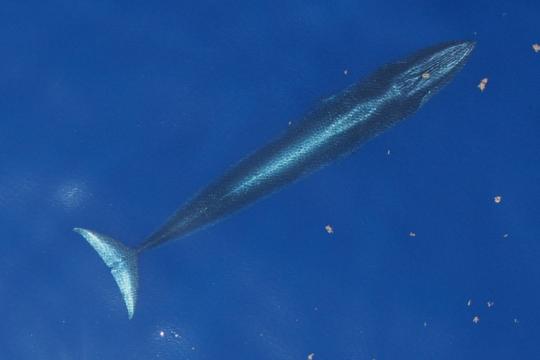 A Rice’s whale just under the surface of the water in the Gulf of Mexico. This endangered whale was recognized as a separate species from the Bryde’s whale in 2021. Credit: NOAA Fisheries under NOAA Permit No. 21938.
A Rice’s whale just under the surface of the water in the Gulf of Mexico. This endangered whale was recognized as a separate species from the Bryde’s whale in 2021. Credit: NOAA Fisheries under NOAA Permit No. 21938.
Celebrate Whale Week with Us: A Message from Janet Coit, Assistant Administrator of NOAA Fisheries
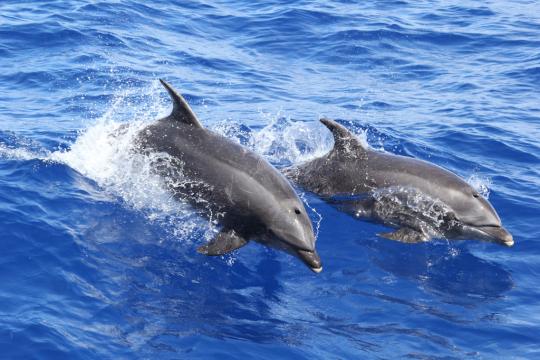 Pair of bottlenose dolphins. Credit: NOAA Pacific Islands Fisheries Science Center/Lisa Morse.
Pair of bottlenose dolphins. Credit: NOAA Pacific Islands Fisheries Science Center/Lisa Morse.
Management Overview
The True's beaked whale is protected throughout its range under the Marine Mammal Protection Act.
Additionally, the True's beaked whale is listed under:
- Appendix II of the Convention on International Trade in Endangered Species of Wild Fauna and Flora (CITES)
- Annex II of the Protocol for Specially Protected Areas and Wildlife (SPAW)
Conservation Efforts
Overseeing Marine Mammal Health and Stranding Response
We work with volunteer networks in all coastal states to respond to marine mammal strandings including all whales. When stranded animals are found alive, NOAA Fisheries and our partners assess the animal’s health and determine the best course of action. When stranded animals are found dead, our scientists work to understand and investigate the cause of death. Although the cause often remains unknown, scientists can sometimes attribute strandings to disease, harmful algal blooms, vessel strikes, fishing gear entanglements, pollution exposure, and underwater noise. Some strandings can serve as indicators of ocean health, giving insight into larger environmental issues that may also have implications for human health and welfare.
Learn more about the Marine Mammal Health and Stranding Response Program
Marine Mammal Unusual Mortality Events
True’s beaked whales have never been part of a declared unusual mortality event. Under the Marine Mammal Protection Act, an unusual mortality event is defined as "a stranding that is unexpected; involves a significant die-off of any marine mammal population; and demands immediate response." To understand the health of marine mammal populations, scientists study unusual mortality events.
Get information on active and past UMEs
Get an overview of marine mammal UMEs
Addressing Ocean Noise
NOAA Fisheries is investigating all aspects of acoustic communication and hearing in marine animals, as well as the effects of sound on beaked whale behavior and hearing. For example, the use of at least some types of shipboard echosounders decreases the acoustic detection rates of multiple species of beaked whales, indicating that they change their behavior when they hear these echosounders. In 2018, we revised technical guidance for assessing the effects of human-made sound on marine mammal hearing.
Regulatory History
Like all marine mammals, True’s beaked whales are protected under the MMPA.
Key Actions and Documents
More Information
Last updated by NOAA Fisheries on 06/23/2025
Science Overview
NOAA Fisheries conducts a variety of research on the biology, behavior, and ecology of beaked whales. The results of this research are used to inform management decisions and enhance protection efforts for this and other beaked whale species.
Stock Assessments
Determining the population size of the True’s beaked whales helps resource managers measure the success of NOAA Fisheries’ conservation measures. Our scientists collect and present these data in annual stock assessment reports.
Shipboard Studies
NOAA Fisheries conducts research cruises to collect information on beaked whale stocks, including habitat preferences and feeding ecology. For example, the Northeast Fisheries Science Center conducted a shipboard survey in which they identified new habitat for True’s beaked whales off the U.S. east coast. Cruises also help us estimate the abundance of beaked whales. Information from this research can be used in management actions to protect these animals.
Acoustic Science
Our research is also focused on acoustics—using underwater sound to learn more about the species. We study the basic acoustic behavior of cetaceans and fish, mapping the acoustic environment and finding better ways to find cetaceans using passive acoustic technologies. For example, we tow arrays of hydrophones behind ships to acoustically detect and locate True’s beaked whales during surveys. We also use archival bottom-mounted recorders to monitor long-term occurrence of the species at specific recording sites. Our acoustic research also assesses the degree to which human-caused activities are changing the underwater soundscape, how these changes may potentially impact marine animals, and what measures can be taken to mitigate these potential impacts.
More Information
Last updated by NOAA Fisheries on 06/23/2025
Data & Maps
Passive Acoustic Cetacean Map
This mapping tool shows when and where specific whale, dolphin, and other cetacean species were…
Research
Passive Acoustics Research Group News & Media
Our Passive Acoustics Research Group frequently makes the news. This page links to articles and other media featuring our staff and their research.
Last updated by NOAA Fisheries on 06/23/2025

